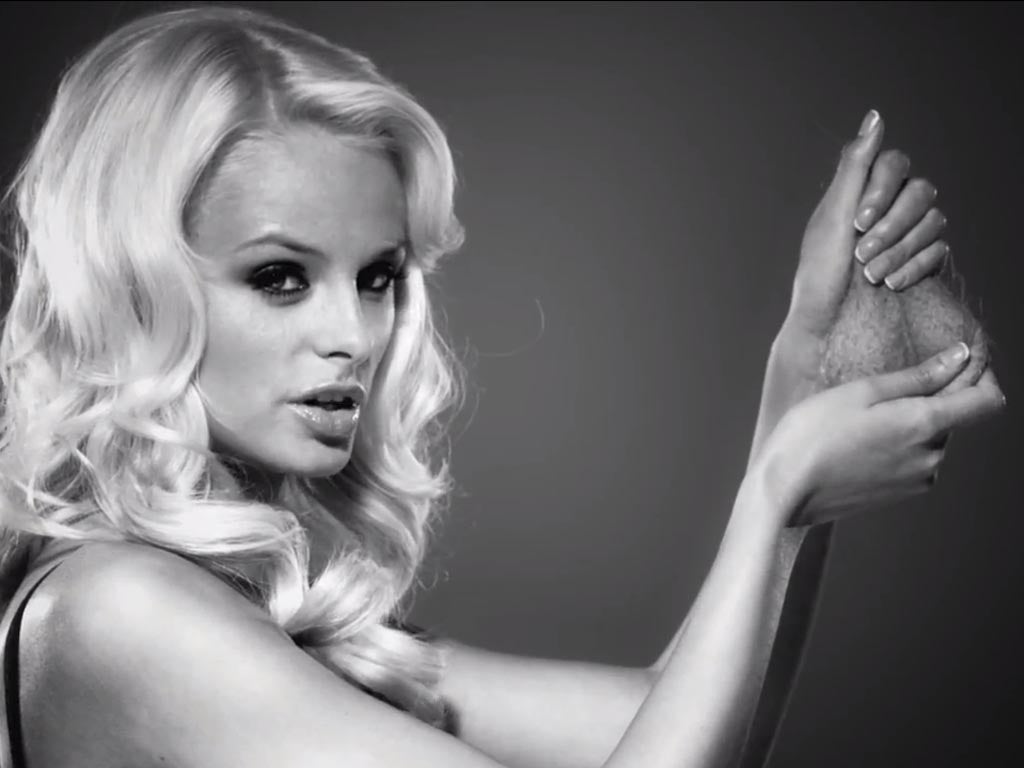Sex sells, so charities should use it to their advantage
Some people weren't fans of the recent breast cancer awareness campaign showing Mel B's cleavage - but it's working, simply because we're talking about it.

Your support helps us to tell the story
From reproductive rights to climate change to Big Tech, The Independent is on the ground when the story is developing. Whether it's investigating the financials of Elon Musk's pro-Trump PAC or producing our latest documentary, 'The A Word', which shines a light on the American women fighting for reproductive rights, we know how important it is to parse out the facts from the messaging.
At such a critical moment in US history, we need reporters on the ground. Your donation allows us to keep sending journalists to speak to both sides of the story.
The Independent is trusted by Americans across the entire political spectrum. And unlike many other quality news outlets, we choose not to lock Americans out of our reporting and analysis with paywalls. We believe quality journalism should be available to everyone, paid for by those who can afford it.
Your support makes all the difference.I know it. You know it. Advertisers know it - sex sells.
So it was with some amusement that I read some people’s dismay over the new breast cancer campaign.
Don’t get me wrong, I’m not sure looking at Mel B’s impressive assets in a copycat of Janet Jackson’s 1993 Rolling Stone cover makes me immediately want to strip off and look for lumps.
But sorry to feminists out there, I happen to rather like the picture of the former Spice Girl and her enviable cleavage - it automatically makes me think of my own rather less well-endowed pair and that I have become rather remiss at checking them of late.
Like it or not though, the very fact that it this photograph being talked about means it is working on increasing awareness.
So the charity CoppaFeel! which is behind the image, is clearly cashing in successfully on the marketing tool that has driven advertising for more than a century.
It started in the early 1900s when tobacco companies cottoned on to the fact that using images of nude women significantly boosted sales.
These days fragrances, clothing, alcohol and even fast food outlets are all taking a bite of the bare-breast pie with sexual content and innuendo taking the lead on the billboard.
Advertisers have a few key goals when they set out to brand a product – get attention, create buzz, boost awareness, evoke a response but above all, make the product memorable.
Perhaps it seems odd that in an area saturated with boobs, bum and bare skin, a new campaign would continue the trend rather than try and stand out from the crowd?
But actually science can back up their “if it ain’t broke, don’t fix it” reasoning.
Last year a group of scientists released a report outlining exactly why sex sells.
They found that seeing an attractive man or woman in an advert excites areas of the brain that make us buy on impulse, bypassing the sections which control rational thought.
So it appears to be our own fault that we are bombarded with naked beauty on a daily basis.
But breast cancer charities have not always gone down this route when trying to promote awareness.
We had the Fashion Targets Breast Cancer campaign for starters, where some of the world’s biggest names in fashion, including Naomi Campbell, Claudia Schiffer, Jerry Hall, Kate Moss, Elle Macpherson, Twiggy and Kylie Minogue, were pictured tastefully and more importantly, fully-clothed, in t-shirts emblazoned with a target.
Then there was the Scottish government's £30m Detect Cancer Early drive where the centrepiece of the campaign was an advert showing pictures of real breasts with visible evidence of cancer.
But like a lot of organisations, cancer charities are still capitalising on what works best.
In her piece on breast cancer advertising, writer Taslima Nasreen asks “Did you ever think of sexualizing penile cancer, dude?”
Well yes, they did actually. And have.
This is the most recent campaign by the Male Cancer Awareness Charity to try and get men age 18-30 to sit up and pay attention.
It features model and Celebrity Big Brother contestant Rhian Sugden suggestively touching her body before whipping a pair of testicles out of her own knickers and demonstrating the best way to examine them.
Yes, I know this is another example of advertising using a scantily dressed woman but with three million hits on YouTube it must be doing something right.
Likewise the viral video featuring comic Chris O’Dowd as the fictional Lars Larson, ‘health and safety officer for the ‘Topless Female Trampolining World Championship’ has more than 100,000 internet hits and it was only uploaded a week ago.
You may not like it but the fact is that the little study I referred to earlier found that men are more responsive to sexual imagery resulting in higher visual recognition and recall.
And as for objectifying women, yes of course we could argue that showing nudity, suggestive dress, and intimate situations could lead to a conclusion that women in ads are increasingly represented as sex objects. In fact, I agree with that.
But here’s the thing, the more outraged we get, the more the images of breasts and bums we are going to get bombarded with. We are playing straight into advertisers hands. Because after all, if we are talking about it, it’s doing the job.
Join our commenting forum
Join thought-provoking conversations, follow other Independent readers and see their replies
Comments